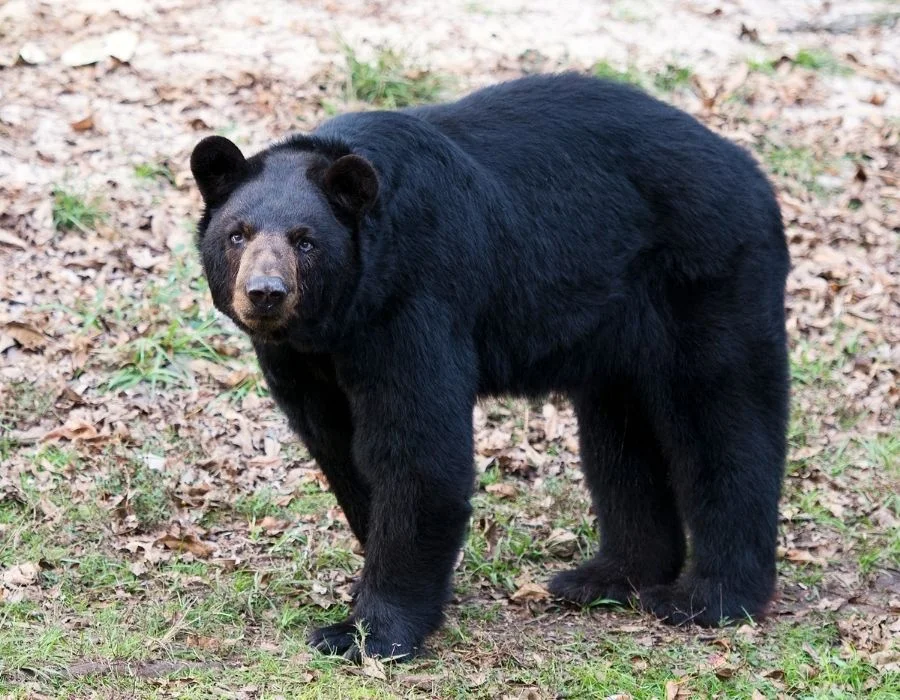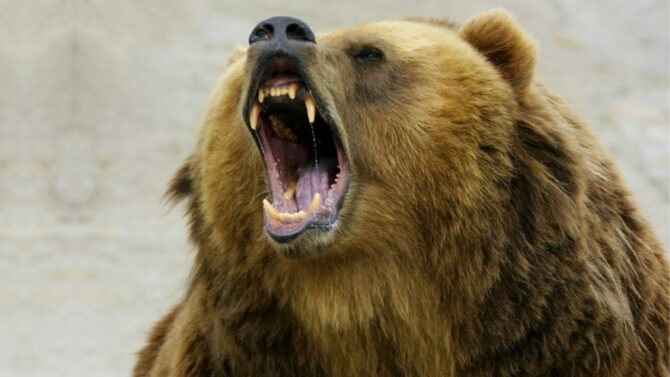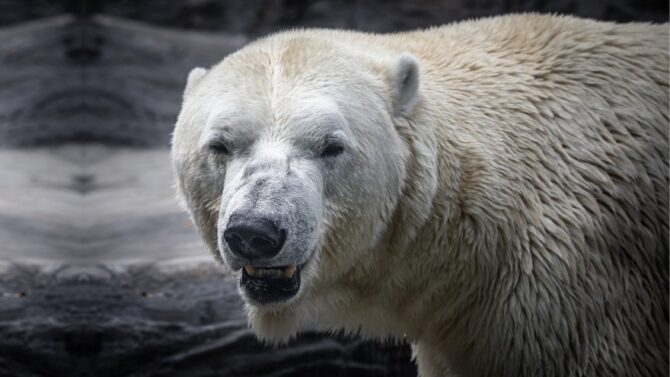It is important to have knowledge of how to survive a bear attack and avoid encounters with them, particularly if you frequently hike and camp.
What do you do when attacked by a bear in the wild? Run? Not recommended.
Typically, bears want nothing to do with people and tend to avoid them. Although when they are hungry or feel threatened, their feelings will most likely change.
Bear attacks are rare, but they can end in death or grievous injuries. Each bear is special, so bear encounters will indeed vary.
In the last 20 years, North America has seen over 25 fatal black bear attacks, averaging about 1.25 deaths per year.1
If you encounter a bear, you need ways to survive. You should always have a can of bear spray; you can also try standing tall and looking imposing.
There are other ways to maximize your survival chances from a bear encounter; you want to survive with all limbs intact.
If you’re ever caught in such a situation, you will find some solid tips that can help in this article. Before that, here’re some basic information you should know about the different species of bears.
Black Bear Overview

- Color: Fur colors vary from black to light blond, depending on the litter.
- Body shape: Large and stocky with short tails. Do not possess the shoulder hump that grizzlies have.
- Height: Adults can range from 1.3 to 1.9 meters (4.3 to 6.2 feet)
- Weight: Varies from 60–300 kg (132–661 pounds), the largest males growing to 2 meters long (6.6 feet) and 409 kg (902 pounds). The males are 70 percent heavier than the females.
- Claws: Shorter than grizzly claws and blunt.
- Location: They are the most common bears in North America; they can be found in Canada and are also present in 41 of the 50 states of America.
- Diet: Classified as a carnivore but has an omnivorous diet.
Brown Bear Overview

- Color: Varies from medium to dark brown.
- Body shape: Larger and stockier than black bears. They possess a distinctive shoulder hump.
- Height: Brown bears have a head and body length of 1.4 to 2.8 m (4 ft 7 to 9 ft 2 ) and a shoulder height of 70 to 153 cm (2 ft 4 to 5 ft ).
- Claws: Brown bears have long, curved, sharp claws. These may reach 5 to 6 centimeters and may measure 7 to 10 centimeters along the curve.
- Location: They are mostly found in Russia. Nevertheless, a part of their population can be found in Alaska, Canada, and a portion of the United States.
- Diet: They are classified as omnivorous.
Note on Grizzly Bears
Grizzly bears are a subspecies of brown bears and have almost the same characteristics as them.
What differentiates them from brown bears is the increased weight and the silver-tipped (grizzled) hair.
How to Survive a Bear Attack – 10 Effective Pro Tips
The moment a bear notices you in its vicinity, and you do likewise, it is instinctive to want to run; don’t!
There are some adequate procedures you can follow to minimize the chances of you dying or losing a limb.
However, circumstances vary, and it’s up to you to choose the path that will help you survive.
1. Stay calm
Remember, bears mostly do not want to attack people and prefer to be left alone. If you encounter a bear, it simply means it either stumbled on you by mistake or it is tracking you, thinking you were prey.
In such a situation, bears may pretend to charge against you and then turn away at the last second.
They may also start woofing or growling defensively, snapping their jaws, salivating, and laying their ears back.
Try conversing with the bear in low tones; it will help calm it down and also help you keep your calm. Don’t try to run away, as it will see you as prey and attack you for real this time.
2. Identify yourself
This can be achieved by talking calmly in low tones so that the bear recognizes you as human and not prey.
Make as little movement as possible. Chances are, it would come closer to check you out, or it would stand on its hind legs out of curiosity.
3. Pick up small children immediately
The bear may consider them as prey, so pick them quickly from the ground. It has the added advantage of making you look bigger and larger, which would confuse the bear.
Picking kids up will also calm them and ensure they don’t run away. Keep talking to the bear to keep it distracted.
4. Make yourself look intimidating
The larger you appear, the less likely the bear is to attack. It has no idea what you are or the challenges you present; it gets confused.
Raise your arms high above your head while standing on the tip of your toes. Try seeking higher ground (a small hill or a stack of rocks) and slowly move towards it.
When you’ve reached it, position yourself on top of it to make yourself appear bigger.
5. Slowly retreat
When faced with a bear who doesn’t seem scared by your unusual behavior but isn’t approaching, backpedal at a sideways angle while taking one step at a time. Move out of its eyesight and then vacate the area.
Moving sideways ensures the bear doesn’t get the idea that you’re escaping, which may trigger a chase.
6. Stand your ground if the bear attacks you
When a bear rushes towards you, don’t run. Stand your ground. They tend to fake attacks when they feel scared and want to check how you’d react.
When a bear bolts towards you from afar and then halts, don’t slouch; keep doing what you’re doing. A test charge is a sign that what you’re doing is working.
7. Resist the urge to run or climb trees
When you make a run for it, it is instinctive for the bear to want to pursue you, and it will. By doing so, you have unknowingly classified yourself as prey.
The best thing to do would be to stand tall, face the bear and resist the temptation to bolt. Bolting would be a suicide mission.
Why?
Most bears can run over 48 km/h, while people can run 9 to 13 km/h. Even the world’s fastest human speed (44.72 km/h) couldn’t beat a bear’s speed.
What are your survival chances? Nothing. This simply means that you can’t outrun a bear.
Bears can also climb trees expertly. Don’t even consider that as an escape plan.
8. Steer clear of a mama bear and her cubs
If you put yourself in between a bear and her cubs, the situation will escalate immediately.
Your survival chances become dimmer. In such cases, you’re better off retreating.
9. Carry your bear spray
When hiking, always have your bear spray on you. This should always be your first line of attack.
If the bear gets within 60m close to you, remove the safety from your bear spray and aim the nozzle below the bear’s face (bear spray diffuses upwards).
You can then spritz the bear spray. Don’t stop until the bear leaves the vicinity. Once the bear leaves, you should:
- Evacuate the area while going in the opposite direction the bear went.
- Avoid running because bears have extremely good hearing and can hear you.
9. Fight back if it’s a black bear
If you’ve done your best to make the bear retreat and it still keeps charging toward you, in the case of a black bear, you should fight back.
Attack its face and muzzle to disable it and make it flee.
10. Fall down and play dead if it’s a brown bear
If you’re being attacked by a brown bear, fall down and play dead. These bears are much deadlier than black bears and cannot be fought off.
If you are unable to escape a bear attack, it is recommended to curl up into a fetal position, shielding your face and neck with your arms as much as possible.
Don’t ever forget the saying: When brown fall down. When black fight back.
Also See: How To Survive A Wolf Attack In The Wild – 7 Effective Tips
Final Thoughts
Bears are very peaceful creatures and don’t like being disturbed. You are more likely to see them fighting over fish and honey than you’re to see them attacking humans.
Nevertheless, when faced with one, follow the above-stated guidelines, and your chances of getting away safely are very high.
Don’t be curious and try approaching them, especially in the wild. Doing so will be at your own risk and peril.
Next up…
References & Notes
Facts Sources:
- Hoffman J. 2020. Fatal Black Bear Attacks in North America Over the Last 20 Years. Wide Open Spaces.






